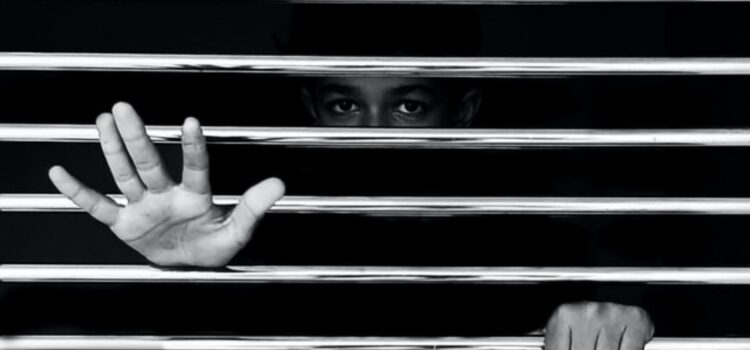

This article is an excerpt from the Shortform book guide to "Humankind" by Rutger Bregman. Shortform has the world's best summaries and analyses of books you should be reading.
Like this article? Sign up for a free trial here .
What was the Stanford Prison Experiment? What do the results of the experiment tell us about human nature?
In 1971, a team of psychologists led by Stanford professor Philip Zimbardo turned the basement of the Stanford psychology department into a “jail.” Zimbardo recruited 24 male college students, half of whom would play the role of guards and the other half the role of prisoners. After a few days, the guards began to treat the prisoners with brutality—they subjected them to strip searches, emotionally and verbally tormented them, and even physically abused them.
Here’s why we shouldn’t make sweeping conclusions about human nature based on the results of Zimbardo’s Stanford Prison Experiment.
Being a Guard Doesn’t Necessarily Lead to Cruelty
Zimbardo’s Stanford Prison Experiment is often cited as proof that humans are selfish and cruel by nature, but there are nuances that aren’t widely known.
In interviews and articles after the experiment, Zimbardo repeatedly claimed that this cruel behavior was entirely unscripted. He said that merely telling participants to be a guard had brought out their sadistic tendencies—the evil that supposedly hides in all of us.
However, when Zimbardo released the archive of the experiment, it became clear that he’d influenced the guards’ actions. According to Bregman, Zimbardo met with the guards before the experiment began and told them to treat the prisoners with brutality. Due to Zimbardo’s interference, Bregman maintains that the experiment tells us very little about human nature.
However, Bregman notes that a similar study conducted more recently, without unethical interference from the researchers, had the opposite result of the Stanford prison experiment. This was a 2002 reality TV show on the BBC called The Experiment, run by psychologists Alexander Haslam and Steven Reicher. Like Zimbardo, Haslam and Reicher divided participants into guards and prisoners. However, they didn’t give the guards any directives. By the end of the series, the prisoners and guards were sharing their food and playing games together, and they’d voted to create a commune. Bregman concludes that being a guard doesn’t automatically bring out our evil nature.
| Fact Check: Prisoner-Guard Conflict in The Experiment Bregman is correct that in The Experiment, the prisoners and guards mostly got along and had created a commune by the end of the series. However, his portrayal is a slight oversimplification. The show did have some conflict, including a confrontation between prisoners and guards over the quality of the food. Moreover, at the end of the show, several participants advocated for a “military regime” instead of a commune, creating two factions. The researchers ended the study because the two sides couldn’t reach a compromise. Still, in their account of the experiment, Haslam and Reicher noted that the guards didn’t deliberately administer any cruel punishments. Rather, the conflict that occurred was due more to the prisoners’ desire to humiliate and undermine the guards. This supports Bregman’s claim that being a guard doesn’t necessarily bring out the evil inside of us. |
Ethical Critiques of the Stanford Prison Experiment
While Bregman describes the Stanford Prison Experiment in detail and touches on its apparent methodological flaws, other psychologists have gone into detail about an arguably bigger issue with the experiment: its severe ethical breaches.
The first ethical objection is the setup and premise of the experiment. Modern guidelines for psychology studies state that the researcher must be an expert in the subject of the experiment. Critics of the Stanford prison experiment point out that Zimbardo had no experience with prisons. This made him ill-suited to create a fake “jail” because he couldn’t foresee how the experiment would turn violent so quickly.
The second objection is to Zimbardo’s recruitment of the prisoners and guards. Zimbardo didn’t inform the participants how violent the experiment would get. In fact, he told the prisoners beforehand that they wouldn’t get hurt, which turned out to be a lie. Modern guidelines require psychologists to fully explain the setup and risks of the experiment before participants consent.
Lastly, and most importantly, psychologists criticize the emotional and physical violence of the study, including the strip searches and the physical abuse. To make matters worse, Zimbardo told prisoners that they couldn’t leave, even when the guards’ actions caused them considerable emotional trauma. Modern guidelines strictly forbid this type of violence.
However, despite the widespread criticism of the Stanford Prison Experiment, including Bregman’s book, Philip Zimbardo stands by his research. In his 2007 book The Lucifer Effect, he claims that the guards weren’t merely acting a part; rather, they began to enjoy violence. He notes that if they had just been acting, the guards would have been the most violent in the day, when the cameras were on and the researchers could see them. However, the guards were particularly brutal to the prisoners at night, subjecting them to searches and violence even when no one was watching. According to Zimbardo, this is evidence of the “lucifer effect”—humans’ inherent ability to become evil in certain circumstances.

———End of Preview———
Like what you just read? Read the rest of the world's best book summary and analysis of Rutger Bregman's "Humankind" at Shortform .
Here's what you'll find in our full Humankind summary :
- Why humans are fundamentally good, not evil
- How the Stanford Prison Experiment was misleading
- How recent studies have debunked "Killer Ape Theory"






